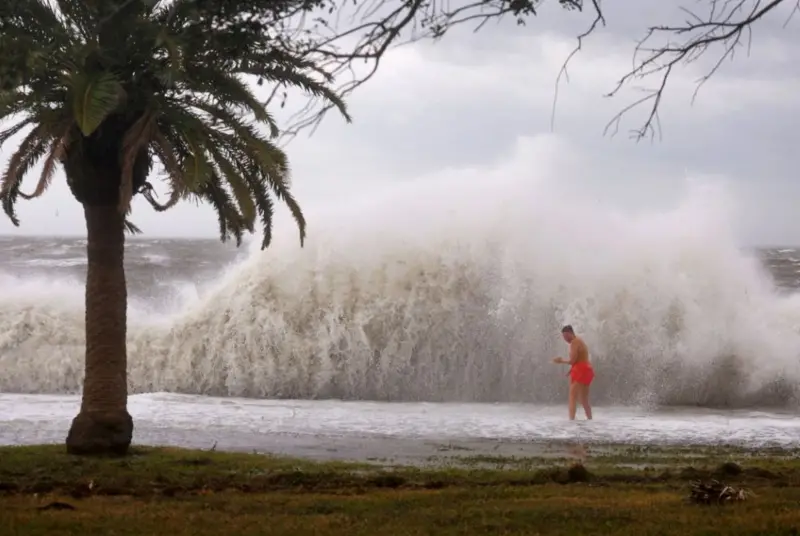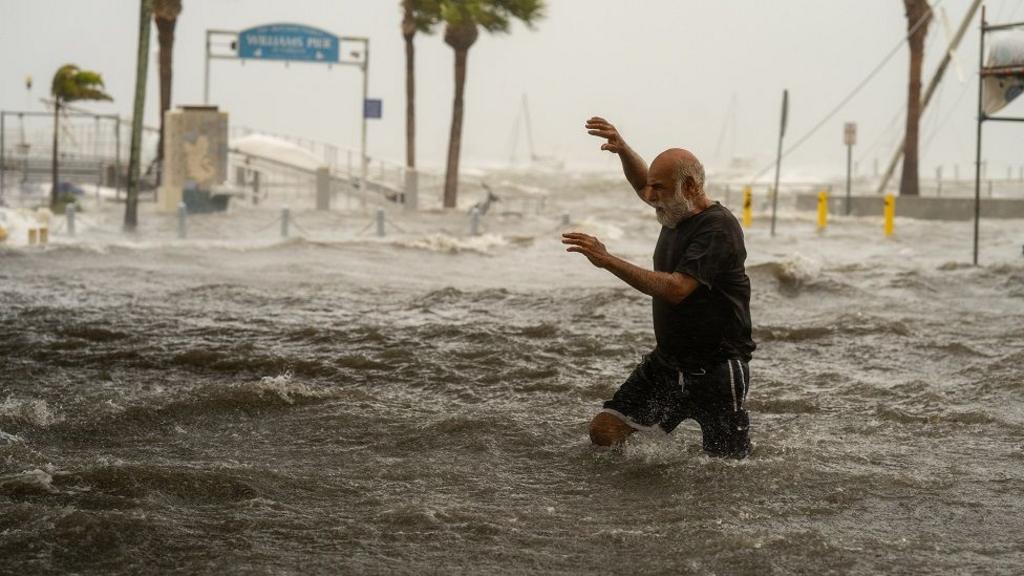Hurricane Helene, once a monster category 4 storm, left Florida battered, bruised, and underwater before crawling its way into Georgia as a tropical storm. Although it’s lost some power, the National Hurricane Center warns, “life-threatening conditions” persist.
Thank you for reading this post, don’t forget to subscribe!From Category 4 to Tropical Storm: Helene’s Path of Destruction
Helene made landfall in Florida with wind speeds hitting an incredible 140 mph (225 km/h), flooding homes and turning highways into rivers. The worst-hit areas, such as the Big Bend region, saw water levels rising as high as 15 feet, pushing Floridians to their limits.
The storm might have downgraded to a tropical storm, but it’s far from finished. Now in Georgia, Helene is barrelling inland, leaving behind a trail of chaos. With Georgia next in line, residents are on high alert, especially in Tennessee and the Carolinas, where Helene is heading next.
Florida’s Battle with Helene
Floridians weren’t new to hurricanes, but Helene? She was a different beast. Homes were submerged, forcing families like Briana Gagnier’s to swim out with their pets, all while water rose to shoulder height. “Everywhere I look, devastation,” Briana said as she watched her home disappear underwater.
Read more: Trump and Zelensky: A Last-Minute Meeting Amid Campaign Tensions
Despite intense warnings, there’s a grim tally: one Floridian tragically lost their life when a road sign fell on their car. Georgia saw similar chaos, with two more fatalities reported after a tornado spun off from Helene, flipping a mobile home like a pancake.
What’s Next for Georgia?
As Helene carves its path across Georgia, residents are bracing for impact. With the storm’s gusts hitting up to 90 mph, coupled with relentless rainfall, the situation is, in the words of meteorologists, “still dangerous.” Roads are washed out, homes are flooded, and tornado warnings continue to loom over the region.
And it’s not just about the winds. Georgia could see up to 20 inches of rain in some areas, potentially causing flash floods and landslides, especially in the mountainous regions. While the storm weakens, it’s still moving at a fast clip—30 mph—so Georgia isn’t out of the woods yet.

Have Hurricanes Like Helene Been Getting Worse?
The debate about whether hurricanes are becoming more frequent is still ongoing. However, according to the Intergovernmental Panel on Climate Change (IPCC), we’re seeing a trend toward more intense storms, those reaching category three or above. Helene fits this mold—another reminder that when hurricanes hit these higher levels, the destruction is catastrophic.
There’s also evidence pointing to an increase in rapid intensification, which means storms like Helene can grow deadly fast. Florida experienced that firsthand.
Surviving the Storm: What Should You Do Now?
If you’re in the path of Hurricane Helene, here’s what you need to keep in mind:
- Stay Sheltered: Even though Helene has weakened, high winds and floodwaters remain lethal. Follow local authorities’ advice and stay indoors.
- Prepare for Floods: If you’re in a flood-prone area, move valuables to higher ground. If authorities issue a flood warning, don’t hesitate to evacuate.
- Stay Connected: Power outages are widespread, with over 1.8 million people already in the dark. Have backup power sources or stay in touch with loved ones via emergency services if necessary.
The Aftermath
The effects of Helene will be felt long after the winds have died down. Florida will need months, if not years, to recover, while Georgia, the Carolinas, and Tennessee brace for their turn. Helene might have weakened, but her damage is just beginning.

